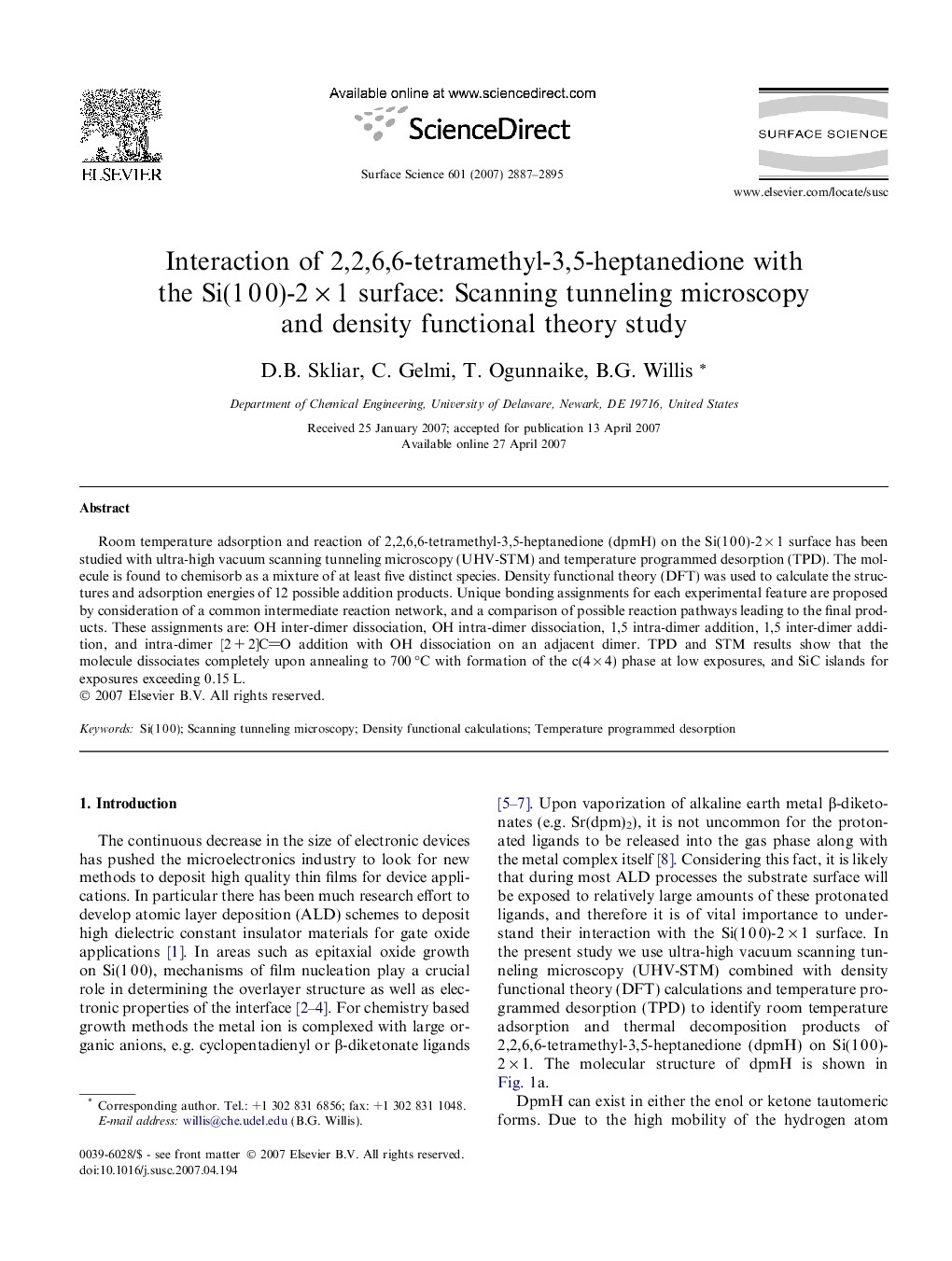| Article ID | Journal | Published Year | Pages | File Type |
|---|---|---|---|---|
| 5426614 | Surface Science | 2007 | 9 Pages |
Room temperature adsorption and reaction of 2,2,6,6-tetramethyl-3,5-heptanedione (dpmH) on the Si(1 0 0)-2 Ã 1 surface has been studied with ultra-high vacuum scanning tunneling microscopy (UHV-STM) and temperature programmed desorption (TPD). The molecule is found to chemisorb as a mixture of at least five distinct species. Density functional theory (DFT) was used to calculate the structures and adsorption energies of 12 possible addition products. Unique bonding assignments for each experimental feature are proposed by consideration of a common intermediate reaction network, and a comparison of possible reaction pathways leading to the final products. These assignments are: OH inter-dimer dissociation, OH intra-dimer dissociation, 1,5 intra-dimer addition, 1,5 inter-dimer addition, and intra-dimer [2 + 2]CO addition with OH dissociation on an adjacent dimer. TPD and STM results show that the molecule dissociates completely upon annealing to 700 °C with formation of the c(4 Ã 4) phase at low exposures, and SiC islands for exposures exceeding 0.15 L.
